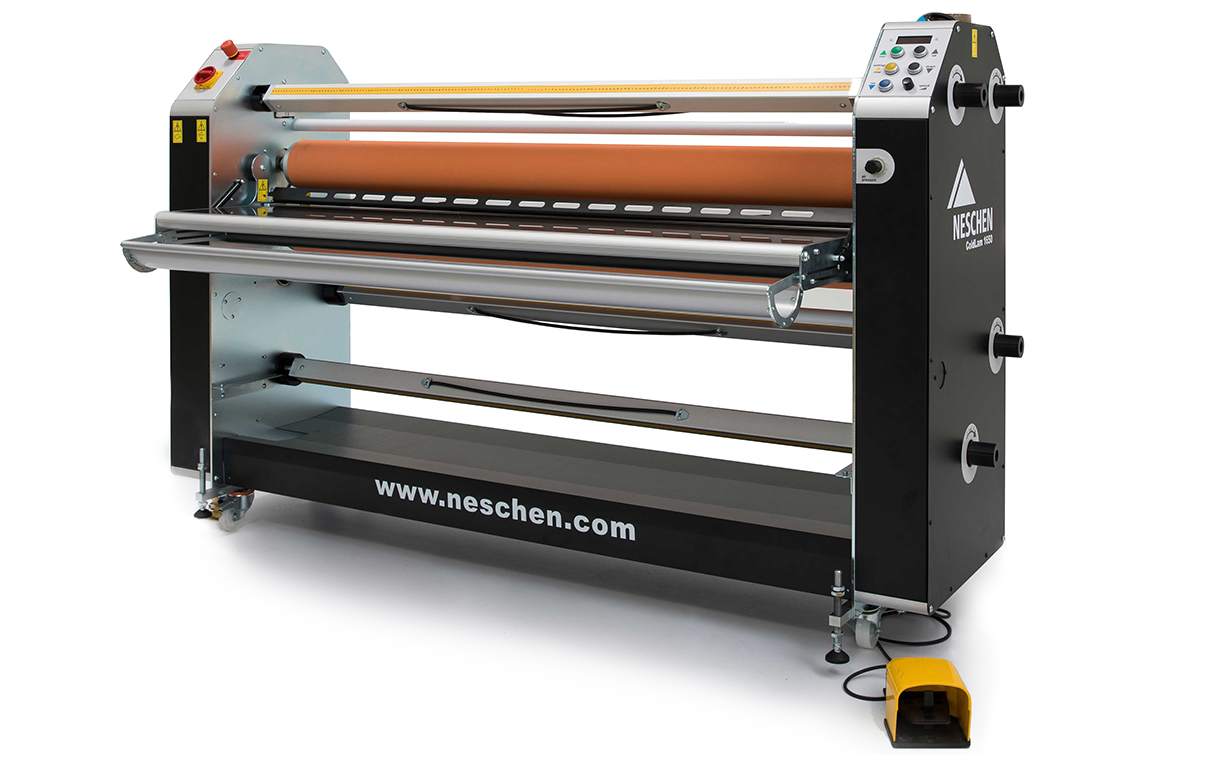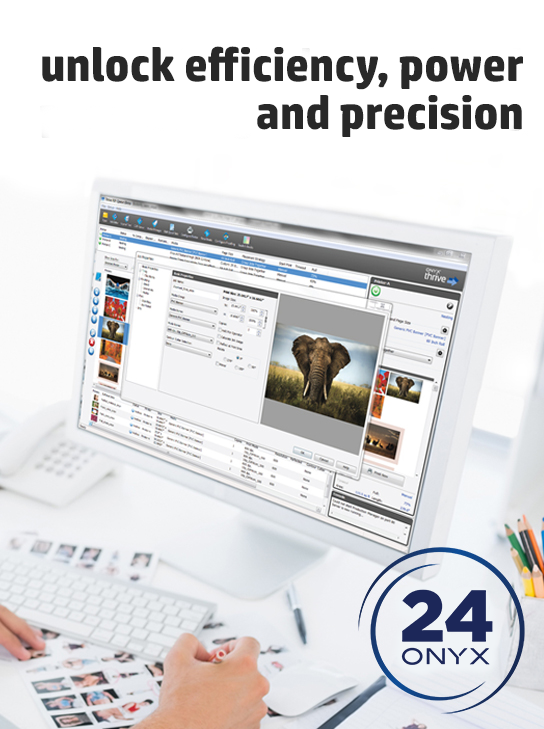-
Read more ...
We often hear the same question from prospective buyers in various forms: "Laminators only consist of two rollers and a motor. So why are some more expensive than others?" It's like cars. They all have four wheels and an engine, but the price can be very different.
Everyone recognizes the difference between a Mercedes and a Skoda or Dacia, even though they all get you from point A to point B. The differences between laminators don't jump right at you, so choosing the right model can be difficult. Like you have to decide whether you need a van or perhaps a small pickup truck for your business.
Many of the machines on the market are touted as "professional equipment at an affordable price." But the term "professional" has many different meaning for laminators, like with cars. All Mercedes, Skoda, or Dacia carea are professionally built, but the differences are still significant. So how do you find a suitable laminator for your business? What are the differences? What is pure marketing opinion, and what are the recommended features? We believe the following points will help you find the laminator that works best for your business.

Wish list
Every customer should first make a list of the use cases he (or she) would like to realize on his (or her) future machine. In doing so, he (or she) should specify the requirements as precisely as possible. Write down all applications in detail: specific material, even unusual projects. Any good supplier should explain what the end-suer can and cannot realistically expect.
Demonstration
A laminator is operated by hand. For this reason, an actual, physical demonstration is required even before purchase. A technical data sheet provides essential information, but it isn't very sensible if you can't touch the machine. To use the car analogy again, the user of the laminator would not buy a car just because of a brochure. A "test drive" is a must.
What are the most important parts of a laminator and what should you pay special attention to?
Rollers
The rollers are the essential parts of the laminator. Their characteristics and behavior significantly impact the operator's work efficiency and the final product quality, so check the diameter of the rollers. In general, the larger, the better. Larger diameter rollers are often better because they bend less, produce more uniform pressure, and exert less tensile stress on the laminating film. Less tensile stress on the laminating film is especially beneficial when working - with heat assistance - with cast vinyl or standard laminating films.
A laminator with a more prominent roll diameter positively influences the possible shrinkage of the overstretched laminating film at the end of processing. This shrinkage caused by over-stretching during the lamination process usually results not only in trimming at the end of the graphic but can also lead to bending of the laminated board, raised corners and edges of the graphic, or wavy lift-off of the drawing during vehicle wrapping.
A larger diameter roller is also better for laminating soft substrates. A larger roller distributes the pressure evenly over a larger area, so the substrates have less tendency to twist.
When looking at roller characteristics, also check the thickness of the material. Thicker metal gives more stability than thinner steel, even for the same roll diameter. More robust and more stable rolls are essential for laminating more complex surfaces such as MDF and glass.
Another parameter to check is the weight of the roll. Excellent and reliable rollers weigh about 40 kg. With two rollers in the machine, this means a weight of 80 kg. If you see a data sheet in which the total weight of the device, including the frame, is given as 150 kg, you know what to expect - a weak machine.
The last part of the roller you should focus on is its soft coating. This should be thick enough for possible later grinding of the coating. The rubber coating should also provide perfect geometry, ideally with a crown on one of the two rollers.
Heating
The next characteristic value you should pay attention to is the heating of the roller. We recommend a machine with a heatable top roller even for pressure-sensitive adhesives, so-called "cold" laminating films. The temperature should be up to 70 °C, with the possibility to adjust it continuously in small steps. Heated rollers allow the adhesive to "flow". Depending on the materials used, this can significantly impact the quality of the laminating result.
Heat allows the adhesive to flow and, therefore, helps avoid or reduce visible effects of inclusions - so-called "silvering". One challenging application is laminating to acrylic sheets. Heat is beneficial here. You will appreciate the higher temperatures above 50 °C if you are either processing thicker laminating films, e.g., floor graphic films or if you are sending an already laminated graphic through the laminator again to reduce "silvering". You can laminate at temperatures well above the first pass in the second pass since the material has already been laminated. This actually speeds up the passage of the material through the machine.
Pressure Setting
Each material you work with requires a specific pressure setting. For laminating cardboard, minimize the pressure. You need as much pressure as possible for laminating thick floor graphic films. Most machines on the market offer a manual pressure setting. This can lead to many problems, such as uneven pressure distribution across the width and during a longer lamination process.
Pressure adjustments and the results obtained are inaccurate (for most machines with mechanical adjustment). If a pressure measurement is available, it is not always reliable.
For this reason, Neschen laminators are equipped with a pneumatic pressure system. Repeatable and accurate pressure adjustment is critical. The pressure you see on the pressure gauge is the actual pressure the rollers exert on your graphic.
Control and ergonomics
All controls on the control console, especially the start and stop buttons and the control buttons for adjusting the rollers' rotation, speed, and direction, should be accessible from both sides of the machine, especially when only one operator is working on the laminator. But even with two operators, a double-sided control panel is advantageous. There is no need to walk around the machine, increase efficiency, and improve work safety. For reasons of work simplification and time-saving, we recommend electronic control.
Coaxial and torsional stiffness
All rollers and axes must run parallel on a laminator. Only in this way, combined with the high torsional rigidity of the machine frame, can precise guidance of the material be ensured, even for complete roll-to-roll jobs at high speed. If you expect your next machine to handle total roll-to-roll laminating tasks, be sure to test this on your new laminator before you buy!
On the subject of frame strength, there are many machines on the market (usually very low-cost units) that meet the required design rigidity in the first few months; however, over time, the frame's strength degrades. For this reason, Neschen offers machines with sturdy and robust construction. Remember that you should use the laminator to increase your business profits. Therefore, when buying a new laminator, this question should always be asked beforehand, not after the fact.
To achieve a sturdy, robust and reliable machine design, Neschen builds its laminator product line with sidewalls constructed of heavy steel plates, not a thin metal plate.
Unwinding and winding of the material
The brakes for the unwind and rewind shafts must be easily accessible, easy to operate, and durable. Inserting the shafts into the machine must be accessible and smooth to perform. Remember: the weight of the post, including the whole roll, is the weight you want to insert into the machine quickly.
The measuring scale on each shaft with the indication "0" in the center is beneficial to set the medium used and the orientation of the take-up shaft.
Ready to test?
Last but not least, once you're ready to test your dream laminator, focus on the following steps during the demonstration:
Use grayscale images for the test and have the machine operator laminate at least 20 linear feet - the more, the better. Ask the operator to stop the machine halfway through the lamination process and check the line on the graphic. Only a slight stripe should be visible - or better yet, nothing at all.
- For a full-length roll-to-roll test, you can use vinyl in standard colors, ideally black and laminate.
- Observe the alignment speed, accuracy, and efficiency of the machine being demonstrated.
- Test the lamination with paper as well. Paper is more prone to rippling than self-adhesive vinyl. Some effects disappear over the day (e.g., "silvering"), while others take a few days to appear. Therefore, take the time to evaluate the laminated material. 4.
- On a machine with a working width of +- 160 cm, you should test laminating on sheet material, ideally on PVC-foamed board with a width of +- 800 mm. With these formats, you can easily see the advantages of crowning on the top roller and its rigidity. Bubbles can show on the cardboard even several days after lamination. So again, take enough time to evaluate the results.
- Check the safety system. Is it working correctly? Light barrier, screw conveyor, foot switch ... everything should work for the operator and not fail. Remember: the safety system is there to protect your employees and your business.
Skip to Content
- Create an Account
- Offers for you

+44 (0) 1527 853 136






